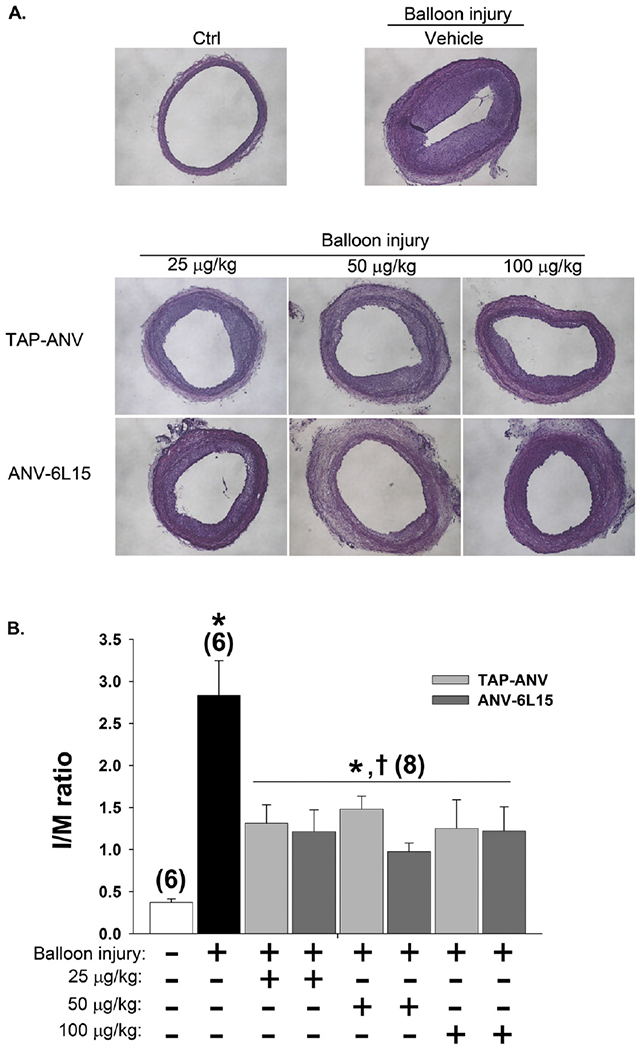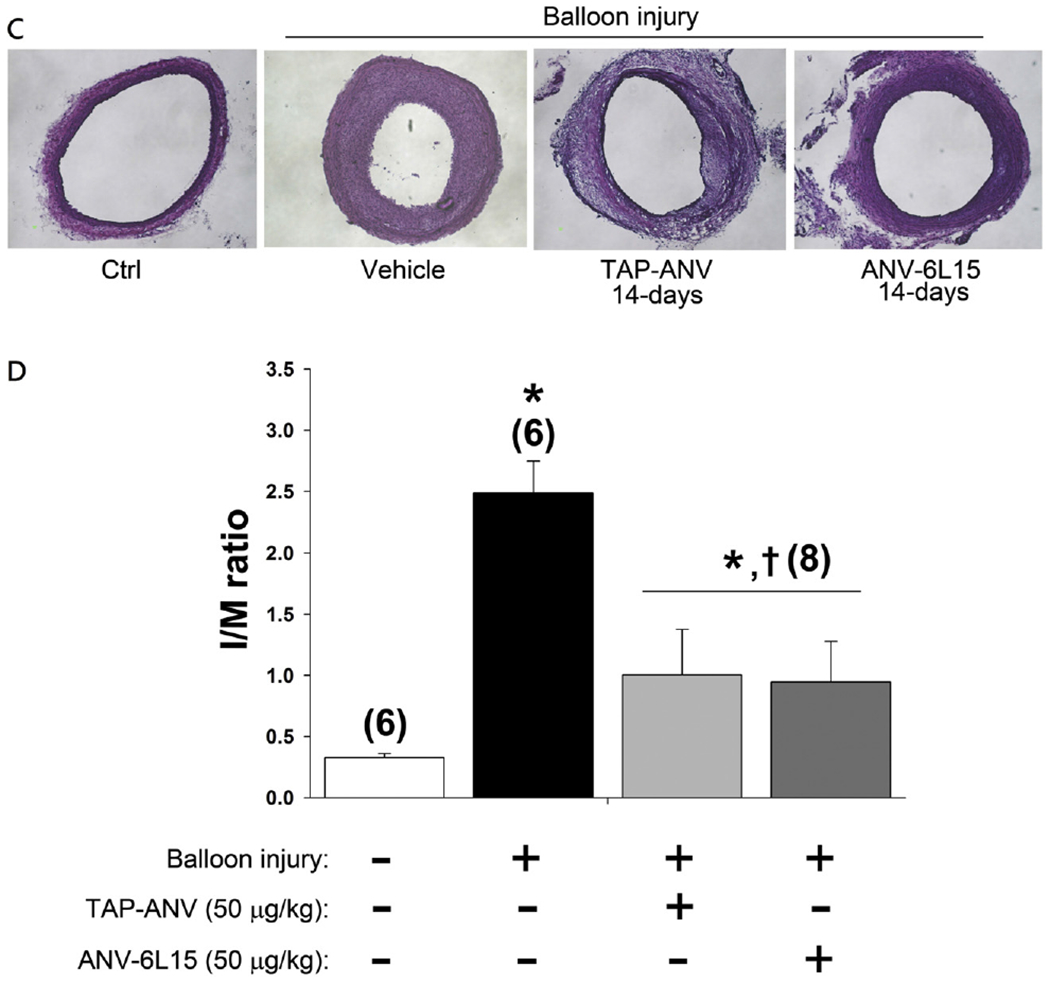Fig. 3.


Effects of TAP-ANV and ANV-6L15 on neointima formation after balloon angioplasty of carotid artery. A. Representative histological cross-section of uninjured carotid artery (Ctrl), balloon-injured carotid arteries treated with 3 injections of PBS (vehicle), TAP-ANV (25, 50, 100 μg/kg), and ANV-6L15 (25, 50, 100 μg/kg) via tail vein at 30 min before balloon procedure, immediate after procedure and 120 min post-angioplasty. The carotid arteries were harvested 14 days after balloon injury for histological analysis and measurements of areas of the intimal and the media. B. The intima/media ratios (I/M ratio) were calculated for the uninjured carotid arteries (Ctrl) and balloon-injured carotid arteries treated with 3 bolus injections of PBS (vehicle), TAP-ANV (25, 50, 100 μg/kg), and ANV-6L15 (25, 50, 100 μg/kg). The I/M ratios represent mean ± SD (n = 6–8). The symbols * and † indicated significant difference compared with uninjured control and vehicle-treated group respectively. C and D. Effects of extended treatments: Rats received 3 i.v. bolus injections of PBS, (vehicle),TAP-ANV (50 μg/kg), or ANV-6L15 (50 μg/kg) during balloon procedure on day 1, followed by one additional bolus injection (50 μg/kg) on day 2, day 3 and every 2 days thereafter until day 14. C. Representative histological cross-sections of uninjured carotid artery (Control), balloon-injured carotid arteries treated with PBS (Vehicle), TAP-ANV, and ANV-6L15. D. The I/M ratio of each treatment group represents mean ± SEM (n = 6–8). The symbols * and † indicated significant difference compared with uninjured control and vehicle-treated group respectively.
